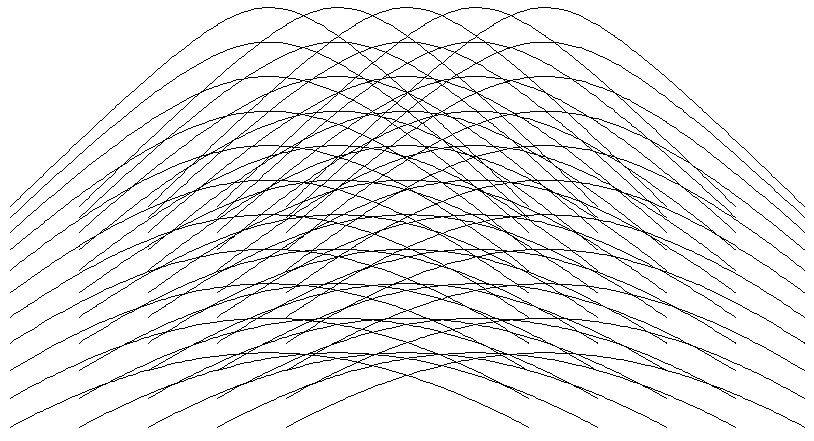Home Page or Table of Contents
This step is an extension of SAR Processing (Brute Force, Multiple Range Bins). In extending from a single range line to a multiple range lines, one encounters the full computational load of forming a two-dimensional image:

As an example, suppose we wish to form a continuous two-dimensional image using a beamwidth of 1000 successive looks (1000 radar PRIs) over an range extent of 1000 pixels deep at a radar PRF of 200 PPI. The following three steps are then necessary:
STEP 1 --Compute one range pixel by rotating and summing 1000 vectors along the appropriate range-azimuth hyperbola:
A + jB = (x1 + j y1) (cos1 + j sin1) + (x2 + j y2) (cos2 + j sin2) ... + (x1000+ j y1000) (cos1000 + j sin1000)
STEP 2 -- Compute one 1000-point range line by repeating Step 1 1000 times
STEP 3 -- Repeat Step 2 200 times/second (radar PRF of 200) to give 200 range lines per second. Doing this for 5 seconds will yield an image 1000 pixels wide.
TOTAL OPERATIONS PER SECOND
(1000 points) x (1000 lines) x (PRF of 200) x (8 operations per vector rotate) = 1.6 billion operations/second
where an operation is either a multiply or add, independent of memory accesses. Although this seems like a daunting computational load, it is possible, as will be seen, to implement the "brute-force" function in real time. Other approaches, such as those using Fourier transforms, require considerably less computation, but do not yield results in which every range line is computed absolutely on boresight.
For information on using interpolation to select points intermediate to those obtained from an evenly sampled data set, see Synthetic Aperture Radar (SAR) Processing Overview.